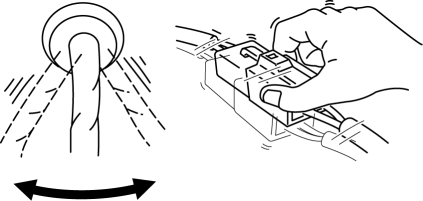Mazda 3 Service Manual: Precaution
Intermittent Concern Troubleshooting
Vibration method
-
If malfunction occurs or becomes worse while driving on a rough road or when the engine is vibrating, perform the steps below.
NOTE:
-
There are several reasons why vehicle or engine vibration could cause an electrical malfunction. Some of the things to check for are:
-
Connectors not fully seated
-
Wire harnesses not having full play
-
Wires laying across brackets or moving parts
-
Wires routed too close to hot parts
-
An improperly routed, improperly clamped, or loose harness can cause wiring to become pinched between parts.
-
The connector joints, points of vibration, and places where wire harnesses pass through the firewall, body panels and other panels are the major areas to be checked.
Inspection method for switch and/or sensor connectors or wires
1. Connect the M-MDS to the DLC-2.
2. Switch the ignition to ON (engine off).
NOTE:
-
If engine starts and runs, perform the following steps at idle.
3. Access the PIDs for the switch you are inspecting.
4. Turn switch on manually.
5. Shake each connector or wire harness a bit vertically and horizontally while monitoring the PID.

-
If the PID value is unstable, check for poor connection.
Inspection method for sensors
1. Connect the M-MDS to the DLC-2.
2. Switch the ignition to ON (engine off).
NOTE:
-
If engine starts and runs, perform the following steps at idle.
3. Access the PIDs for the switch you are inspecting.
4. Vibrate the sensor slightly with your finger.
-
If the PID value is unstable or malfunction occurs, check for poor connection and/or poorly mounted sensor.
Connector terminal check method
1. Check the connection condition of each female terminal.
2. Insert male terminal; fit the female terminal side to female terminal and check to see whether the malfunction is in the female terminal or not.

 General Procedures (Suspension)
General Procedures (Suspension)
Wheel and Tire Installation
1. When installing the wheels and tires, tighten the wheel nuts in a criss-cross
pattern to the following tightening torque.
Tightening torque
88—118 N·m { ...
 Rear Trailing Link Removal/Installation
Rear Trailing Link Removal/Installation
CAUTION:
Performing the following procedures without first removing the ABS wheel-speed
sensor may possibly cause an open circuit in the wiring harness if it is pulled
by mistake. Before ...
Other materials:
Instrumentation/Driver Info. Personalization Features Setting Procedure
Instrument Cluster
1. Connect the M-MDS (IDS) to the DLC–2.
2. After the vehicle is identified, select the following items from the initial
screen of the M-MDS.
Select the “Module Programming”.
3. Then, select items from the screen menu in the following order.
Select “ ...
Light Switch Inspection
Vehicles Without Auto Light System
1. Disconnect the negative battery cable..
2. Remove the column cover..
3. Remove the light switch..
4. Verify that the continuity between the light switch terminals is as indicated
in the table.
If not as indicated in the table, replace the light ...
Warranties for Your Mazda
New Vehicle Limited Warranty
Powertrain Limited Warranty
Safety Restraint System Limited Warranty
Anti-perforation Limited Warranty
Federal Emission Control Warranty/California Emission Control Warranty
Emission Defect Warranty
Emission Performance Warranty
Emission Control ...
